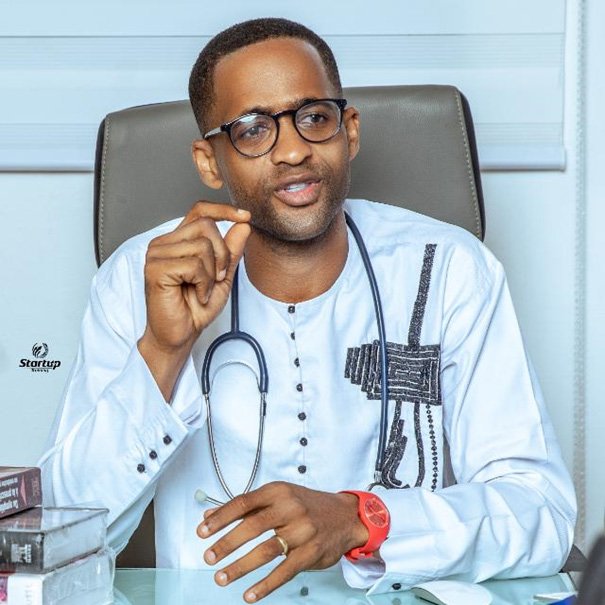Interview-Dr Patrick Ngou : “A simple malaria can quickly become a serious malaria”

In this interview, the paediatrician practising in the city of Kribi in Cameroon, comes back on the case of malaria in children and gives useful advice in the prevention of this disease which kills more than 4000 people every year.
During the month
of April, the international community celebrates the World Malaria Day. What is your assessment of the various
actions taken at the local level to fight malaria?
A lot of efforts are made by the Cameroonian government,
decision makers and donors to help eradicate malaria. Especially the reduction
of malaria mortality in children, mainly children under 5 years old, because they are the most vulnerable.
And also the prevalence
among pregnant women,
whose manifestations can be harmful to them and their unborn child. The national
malaria control programme
is in place, diagnosis
and treatment are free of charge, but not always accessible to all, and we recall
that malaria represents nearly 60% of household health expenditure. However,
the population pays a heavy price both financially and in terms of health. It is also recalled that the two most vulnerable groups are pregnant women and children
under the age of 5.
What are the signs of malaria
in children?
Many people know the signs of malaria in their environment. And many people do not know the difference
between “malaria” and fever. When someone has a fever they say they have “malaria”, but it is not the same thing. There are many diseases that we treat and we think it’s malaria
and there are many cases of malaria that we don’t treat and we think it’s other diseases. So the most classic symptoms of malaria in children are: fever, chills and sweating (hypersudation).
These three signs usually follow each other. But the signs can be very diverse, varied and misleading,
especially in children under five years old. In the child under 5 years of age, the first sign the parent may notice is a convulsion. A child who was suddenly
calm and then starts convulsing. This can quickly lead to a coma or death. So, the most common signs of malaria are fever, chills, sweating, stomach ache, aches and pains and vomiting.
In severe forms, there may be convulsions, intense fatigue, eyes that turn yellow,
inability to drink or eat, urine that turns black or no urine at all, sudden weight gain, so you understand that the signs and symptoms of malaria are not specific to malaria. Also, we cannot stop at signs and symptoms to talk about malaria, we need an examination. And the ideal examination is the thick blood drop. For almost ten years now, we have had rapid malaria tests that are done like blood sugar tests on the fingertips and in five minutes, we have a result. So for the community, it is easier and more convenient to carry out a rapid malaria test which cannot be analysed
separately. So it’s a combination of clinical and biological arguments that make us say that there is malaria.
What are the measures to be taken
to effectively fight malaria in children?
In Cameroon, we have several
representations of malaria.
We have endemic malaria
in hot and humid areas such as the Littoral, South and Centre regions. We have seasonal malaria in the far North which causes many deaths. Treatment and preventive care cannot be provided in a homogeneous
and universal way throughout the country. We therefore take into account these presentations which depend on the climate, the educational, financial, sociological
and cultural level of the different households. At first sight, malaria seems to be managed and taken care of simply, but when we take into account these diversities and specificities, the management of malaria
becomes very complex. We therefore recall that malaria management has two essential components. A community (preventive) component, which is the most important, and a hospital
or drug component. The community component
is all that we already know, i.e. maintenance and sanitation of the environment,
impregnated mosquito
nets, not building in swampy areas, cleaning up around the house, etc., and then there is clinical management
for simple malaria and severe malaria. Then there are other preventive measures such as vaccines which are announced and intermittent treatment for pregnant women, for children
living in epidemic areas such as the far north. Preventive
treatment for children
has been included in the expanded programme of vaccination in Cameroon,
and children are given
a dose of preventive treatment from the age of 6 months…
What are the criteria for the severity of malaria in children and what are your findings at the local level?
The causes and deaths in children under 5 years of age are complications of serious symptoms such as convulsions, coma, respiratory
distress, severe anaemia,
renal, digestive and cardiac problems. It is the severe complications that allow malaria to be classified
as severe malaria. Malaria
also mimics many other diseases, such as typhoid fever, simple flu, sickle cell disease. So there are a lot of patients who end up in the indigenous population when they should be treated
in hospital for severe malaria. Severe malaria can have complications such as blindness, paralysis, mental
retardation, behavioural problems, and kidney failure
leading to dialysis.
Are the measures taken so far sufficient to limit the damage?
The measures taken for the moment cannot be sufficient.
They are far from sufficient
because the management
of malaria does not only concern the Ministry of Health. Malaria is a pathology
that gives us good indicators on the level of development of a country. In the management of malaria,
we include the Ministries
of the Environment, Housing, Finance, Economy,
the town halls and the territorial administration. So you can see that this is a cross-cutting disease. We cannot expect the solution to eradicate malaria to be the responsibility and duty of the Ministry of Public Health alone. It is difficult in our context to say that we are really making progress
despite the projects and programmes. The big difficulty in our context is to make people understand
that malaria is not a hospital disease, but a community disease and a good indicator of development.
Once we integrate this, it will be very easy to get the different actors to integrate. Because for the moment the different actors
are limited to the Ministry
of Health, to donors for the financing of inputs and communication materials.
We have not yet really integrated the role of local elected officials and decentralised
territorial communities
and other ministerial departments in the integral management of malaria.
What do you think is the most effective treatment for malaria?
The best treatment is preventive
(sleeping under a mosquito net). At the curative
level, it is the doctor who judges which treatment
is good for the patient.
Should traditional medicine
be neglected in the fight against malaria in children? If yes or no, why?
I find it a bit difficult to talk about traditional medicine,
because a lot of things are put into it. And some people know grandma’s recipes.
Is this considered traditional
medicine? Because in children it is very delicate.
The administration of medicines to children is dose-dependent. I prefer to abstain from making comments
on traditional medicine,
I remain very Cartesian
and very rigorous on the management of malaria in children, because simple malaria can quickly become serious malaria, especially as children do not speak, so we wonder how the traditional
therapist will easily recognise the signs of seriousness.
What are the good gestures that parents should adopt to protect their children against malaria?
The right thing to do is to avoid spirals and anti-mosquito
tablets, which are very dangerous. These are things that are used occasionally
and punctually. You can’t use them every day, because they are petroleum
derivatives. They have a big impact on children’s health, and cause respiratory
diseases and in the long term can develop cancers. So you have to avoid everything
that is spiral, insecticides
as much as possible. The ideal is to put screens on the windows, to have a house with a ceiling and to sleep under an impregnated
mosquito net. Also avoid houses that are close to swampy areas. Paediatricians
advise against the use of lozenges, spirals and insecticides. If you put the pellets in a room, you must wait at least two to three hours after the pellets are turned off before entering the room. So you don’t sleep with the pellets on in the room.
Interview by Ghislaine DEUDJUI















